This woodworking project is about planer bench plans free. If you want to make a bench with a rustic but mysterious look, we strongly recommend you to pay attention to the instructions described in this project. Invest in weather-resistant lumber (cedar, pine or redwood) and make sure all the slats are perfectly straight and in a very good condition (look for chips, cracks or wanes).
There are many projects to chose from if you want to build an unique garden bench, so it is essential to have several alternatives before starting the actual assembly. Don’t be afraid to adjust the size and the design of the bench, as you should customize it to suit your needs perfectly. For example you should consider adding another planter to the opposite size of the bench.
Planter bench plans

Building a planter bench
Materials
- 1 – 2 pieces of 2×2 lumber – 12″, 2 pieces – 16 1/2″, 3 pieces pf 1×4 lumber – 15″ BASE
- 2 – 12 piece of 1×4 lumber – 16” PLANTER
- 3 – 2 piece of 2×4 lumber – 16″, 1 pieces – 13 1/2″ LEGS
- 4 – 3 piece of 2×2 lumber – 16 1/2″ SUPPORTS
- 5 – 11 pieces of 2×2 lumber – 39″ SEAT
- 6 – 2 pieces of 2×4 lumber – 60″, 2 pieces – 19 1/2″ TRIMS
- 8 pieces of 2×2 lumber – 8 ft
- 3 piece of 1×4 lumber – 8 ft
- 3 pieces of 2×4 lumber – 8 ft
- 2 1/2″ screws
- 1 1/4″ screws
- wood glue, stain/paint
Tools
- Hammer, Tape measure, Carpentry square
- Miter saw, Drill machinery, Screwdriver, Sander, Router
- Safety Gloves, Safety Glasses, Respiratory Mask
Time
- One day
Building a planter bench
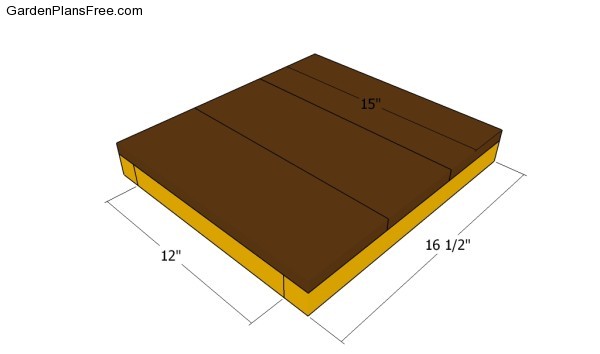
Building the base of the planter
The first step of the woodworking project is to build the base of the planter. As you can easily notice in the image, we recommend you to assemble a simple frame out of 2×2 lumber.
PRO TIP: Afterwards, attach 1×4 slats over the frame, in order to get a horizontal surface, as shown in the plans. Drill pilot holes to prevent the wood from splitting and insert 1 1/4″ screws.
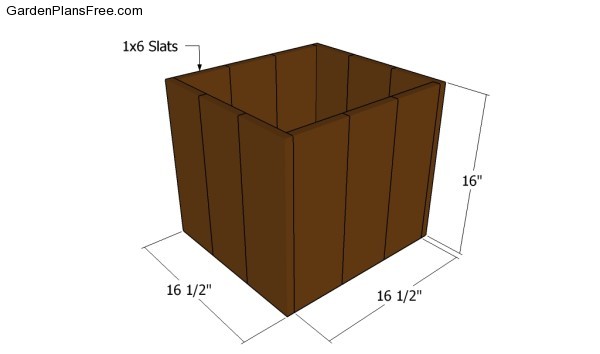
Building the planter
The next step of the woodworking project is to attach 1×6 slats to the exterior of the frame, as in the plans. Align the components at both ends and make sure there are no gaps between the slats. Lock the adjacent walls together by inserting a couple of finishing nails.
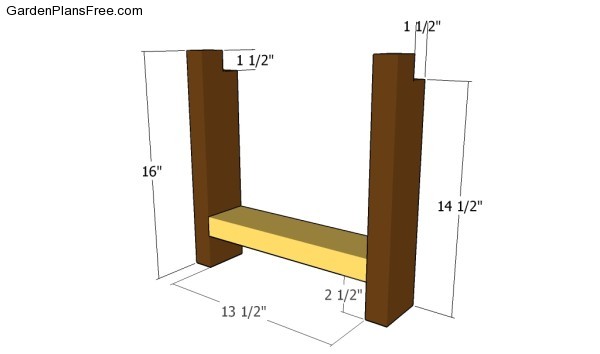
Building the bench legs
Continue the woodworking project by assembling the opposite side of the planter bench. Therefore, we recommend you to build the walls and to lock them together with screws as in the plans.
PRO TIP: Drill pilot holes through the legs and lock them together with screws after making sure they are perfectly plumb. Notch the corners of the legs in order to fit into place properly.
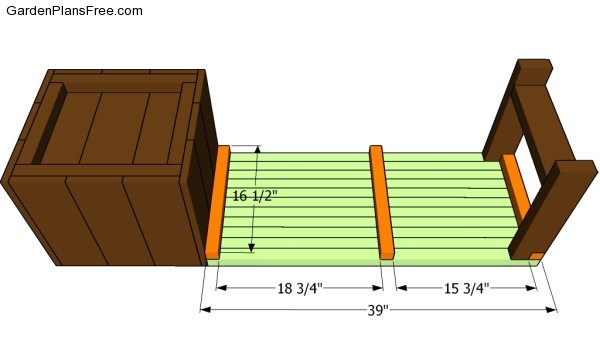
Making the seat frame
Attaching the 2×2 seat slats is a straight forward project but there are a few things that you should take into account if you want to get a professional result. Attach the 2×2 supports to the legs and to one side of the planter before locking them to the seat slats.
PRO TIP: Lay the 2×2 slats on a level surface and leave no gaps between them if you want to get a professional result.
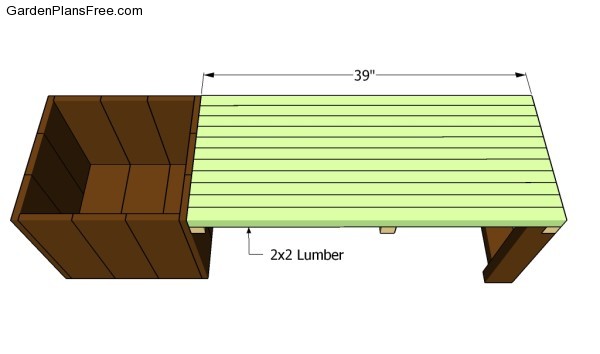
Attaching the seat slats
As you can see in the image, you shouldn’t leave any gaps between the slats, otherwise the seat won’t be aligned with the rest of the planter bench. Work with attention and pay attention to the techniques you use, in order to prevent costly mistakes.
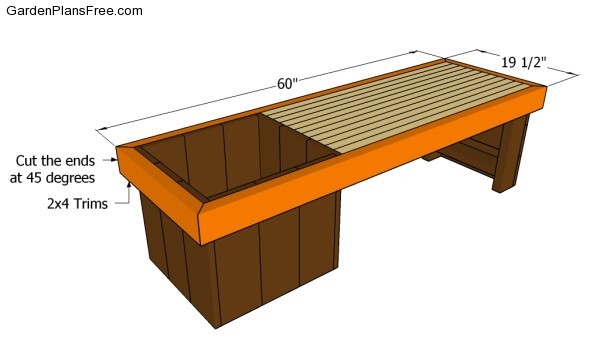
Attaching the trims
One of the last steps of the garden project is to attach the 2×4 trims to the exterior of the planter bench. As you can easily notice in the image, we recommend you to cut both ends of the trims at 45 degrees, as to fit together properly. Align the trims at both ends and lock them into place with finishing nails.
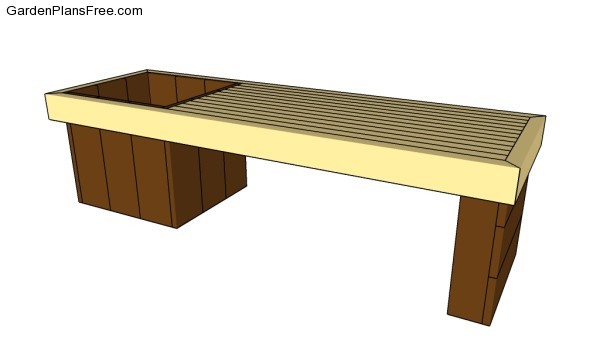
Planter bench plans
Last but not least, you should take care of the finishing touches. Check if the components are secured into place properly and if the frame is rigid. Make sure there are no protruding screws or sharp edges that could injure you.
PRO TIP: Fill the holes with a good wood filler and smooth the surface with 120-grit sandpaper. Apply several coats of paint or stain over the components, in order to protect them from decay.
This diy project was about planter bench plans free. If you have enjoyed the free project, we recommend you to share it with your friends, by using the social media widgets. LIKE us on facebook if you want to be the first that gets our latest projects.
